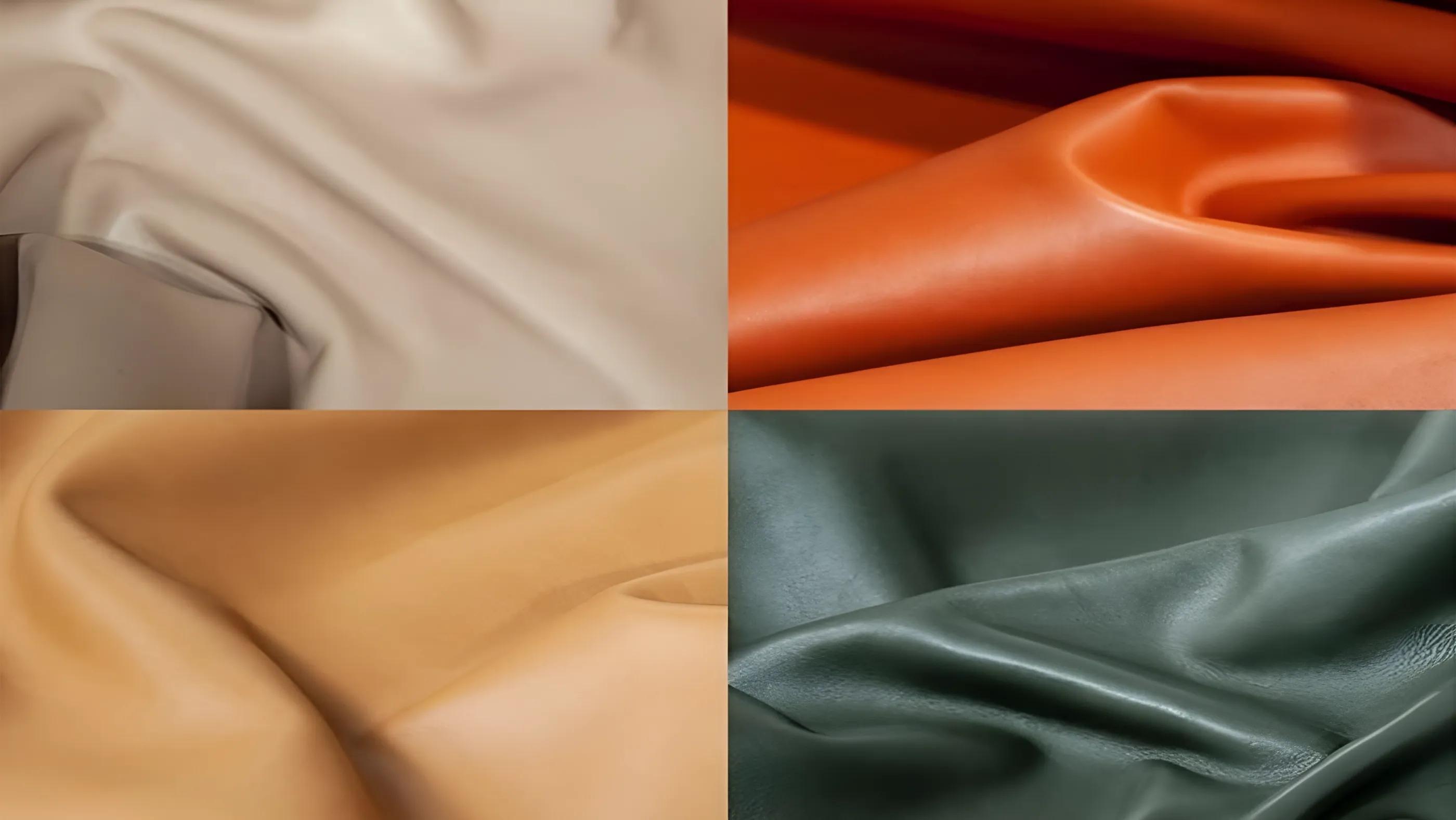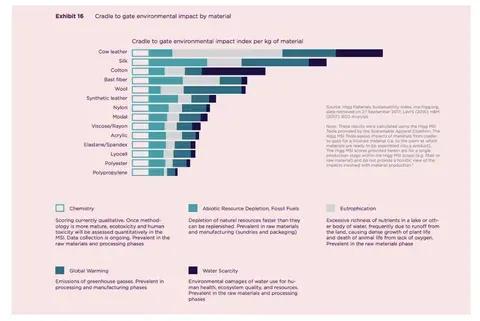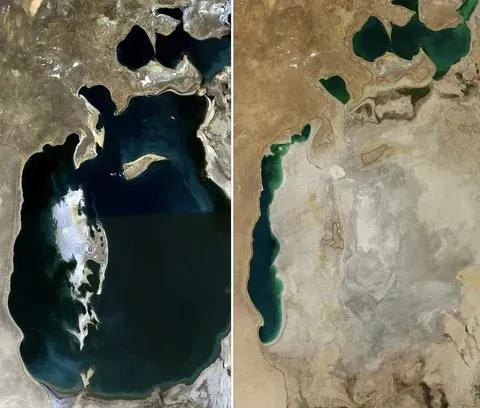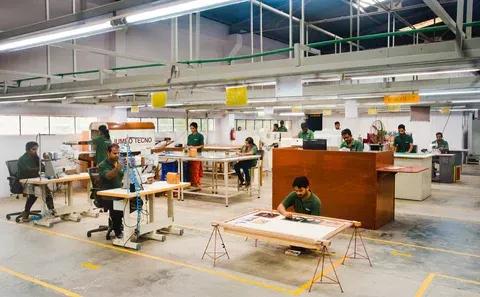
Very often, the term ‘sustainable leather’ is looked upon as an oxymoron. How can it be sustainable when it comes from dead-animal skin? It is not animal-friendly at all. Coming from a family and a spiritual background that deeply reveres nature, it was not easy for me to accept (and now celebrate) the leathers that we use in handcrafting our Aranyani bags. Let me take you through my journey and maybe, there is something in it for us to gain.
But Vegan Leather is available
The term ‘Vegan’ is used to denote goods that are produced without animal products. The term also appears in the same space as other socially conscious terms like ecologically safe and environmentally friendly. However, that is not the case. This leather alternative that doesn't involve animal products is a synthetic fabric that's structured and printed to perform a bit like leather. More importantly, it consists of a knitted polyester base with a PVC or polyurethane coating. Basically, it's a plastic product that mimics the properties of animal skin. Thus, it comes with the same plethora of environmental problems as other fossil-fuel-based synthetics and plastics. In fact, in the longer run, its damage to the environment and ecosystems is far more pronounced and intense.
However, many ethical fashion advocates claim to have comprehensive proof that faux leather or synthetic leather is less harmful to the environment than cow leather. At first glance, it feels comprehensive and powerful. But dig a little deeper, it becomes evident that this is a camouflaged argument at best. The entire argument is based on a ‘cradle

On the face of it, polypropylene, a plastic that takes at least 450 years to decompose, has the least negative impact on the environment! It would thus be preferable to use plastic instead of leather, cotton, silk, wool, rayon, and nylon. It is also economical to make plastics. Hurrah! The world’s problems are solved.
If only things could be as simple as they appear at first glance. Here are points where the ‘cradle to gate’ argument fails.
- The ‘Chemistry’ impact covers ecotoxicity. That is where plastics have a devastating impact. Conveniently, the same values have been assigned for all materials stating, “scoring currently qualitative as methodology is not mature. Data collection ongoing” No wonder plastic becomes the best!
- The ‘Eutrophication’, ‘Global Warming’ and ‘Water Scarcity’ impacts attributed to the cow-leather industry are blatantly wrong. Even PETA agrees that leather is just the byproduct of the meat and milk industry. No one rears cows for leather at all! So ideally, the tag for the first bar in the graph should read as ‘milk and beef’ and not ‘leather’.
In fact, without a leather industry to accept hides of animals slaughtered for their meat, the world would face a massive problem of hide-disposal. In that sense, cow-leather-using industries are not ‘hunters’ that make a kill but ‘scavengers’ that help clean up nature.

But what about alternatives like cotton
In the ‘cradle-to-grave’ chart presented above, the maximum ‘water scarcity’ impact is from cotton. Many cases in 20th-century history show the devastating impact of cotton farming on the environment. The most dramatic one is possibly the story of the Aral Sea which dried up due to intensive water usage for cotton cultivation. Though a square meter of cotton cloth appears to be less damaging to the environment than a square meter of leather, the longevity of cotton is very less compared to leather. An Aranyani bag, for instance, will easily last you a lifetime - something that cannot be said about your cotton clothes.
Satellite images of the comparison of the Aral Sea in 1989 (left) and 2014 (right).
It is not possible to give up cotton completely as it is not possible to give up leather. The best would be to use organic cotton and sustainable leather and increase the number of times the cotton and leather products are used. Let us not discard clothes or bags because they are out of fashion. Seen from another perspective, let's design clothes and bags that are timeless in their fashion and appeal. That is precisely what Aranyani aims to do.
But can leather be toxin-free and sustainable?
Unfortunately, the tanning industry has to make use of several toxic chemicals and there are many of them in the world that do not make use of proper disposal methods. However, sustainability is something we have consciously chosen at Aranyani. For starters, we work only with those tanneries that incorporate wastewater detoxification and recycling into the tanning process. This happens ONLY in Europe and that is where we source our leather from. Our leather comes from an Italian tannery (Conceria Nuova Overlord Spa) that recycles and purifies wastewater. We are fast working to switch to chrome-free leather which is tanned using vegetable dyes. We hope to achieve the same by 2023.
The craftsmen involved throughout the process at our Bangalore atelier are given a fair wage and work in a safe, wholesome environment. This is because, when it comes to sustainability, how people are treated also becomes very important. We also have a policy of zero-waste which we have nearly achieved. The whole process of manufacturing our bags has sustainability built into it. We also strive to offer transparency because transparency is a prerequisite for sustainability. Each Aranyani bag comes with a QR code scanning which gives you all details of who made your bag, what materials went into it, and how it was made.


But leather is leather is leather
All said and done, leather is still animal skin and it involves cruelty to animals. At Aranyani, we don’t use exotic leathers for exactly this reason. We never want an animal harmed for the sake of its skin. Instead, we make use of the discarded skins and hides of animals that were raised for meat and/or milk. And we do it with enormous gratitude to the animal that has offered its skin. We welcome the skins chanting prayers of love and gratitude, making a promise that we will not allow the animal’s sacrifice to go in vain.
That is why our bag designs are not determined by a season or a trend. They are inspired by the timelessness of nature. We hope that our bespoke bags will last our customer’s lifetime and will be passed down through generations as an heirloom.
Aranyani - at the forefront of sustainability
Summing up all the above points we, at Aranyani, have made some clear decisions.
- We will not get into fashion garments because they encourage the ‘use and throw’ attitude which is not sustainable.
- Every bag will be designed to be timeless and will be handcrafted to ensure durability.
- We will adopt the atelier route and not the mass-manufacturing one even at the cost of cost-efficiency to ensure timelessness and durability in the bags. Our bags are meant to be a prized possession rather than merely a seasonal fashionable item.
- We will adopt a more rigorous approach to create bags from leather that are timeless, durable, and keeping in mind the sustainability of our environment. We are always in continuous R&D towards this direction.

This, for us, is a true luxury that ensures a positive impact at every touchpoint.
